Sony Xperia 1 VI vs Samsung Galaxy S24 Ultra: preview

Intro
The long waffle that had a 21:9 display is now gone — the new Xperias will have the more orthodox 19.5:9 aspect ratio, much like the iPhones and Galaxies out there in the world. And while we are at it, the resolution has been downgraded from 4K to FHD+ (1080 x 2340 pixels)
Xperia 1 VI vs Galaxy S24 Ultra differences:
| Sony Xperia 1 VI | Samsung Galaxy S24 Ultra |
|---|---|
| 6.38 x 2.91 x 0.32 in (162 x 74 x 8.2 mm) 6.77 oz (192 g) | 6.39 x 3.11 x 0.34 inches (162.3 x 79 x 8.6 mm), 8.22 oz (233.0 g) |
| 6.5”, FHD+ (1080 x 2340), OLED 120 Hz | 6.8”, QHD+ (1440 x 3088), AMOLED 120 Hz |
| New 19.5:9 aspect ratio, top and bottom bezels still present | 19.5:9, uniform thin bezel all around |
| True optical zoom between 3.5-7.1x | Has two zoom cameras - 3x, 5x |
| Qualcomm Snapdragon 8 Gen 3 12 GB RAM 256 GB / 512 GB MicroSD card slot | Qualcomm Snapdragon 8 Gen 3 12 GB RAM 256 GB / 512 GB / 1 TB No expansion |
| Mostly vanilla Android with very advanced Camera app | Samsung One UI on top of Android |
| 5,000 mAh battery | 5,000 mAh battery |
Table of Contents:
Read more:
Read more:
Design and Size
Bezel, but front-facing stereo
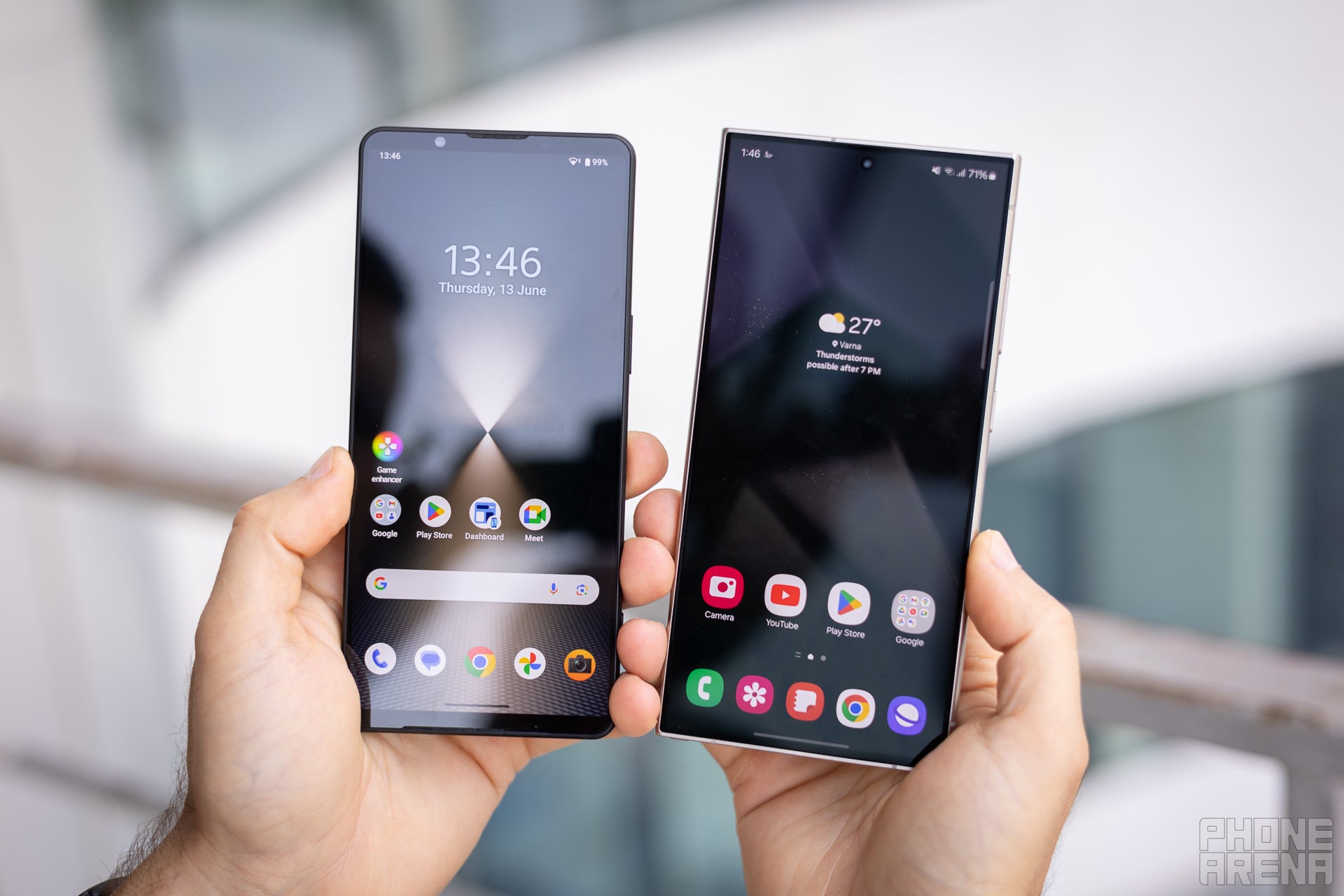
The Xperia phones cling to old features that users love. And this is not us “knocking” them — having front-firing stereo speakers is a bold move, and we can appreciate it if they turn out sounding good. The Xperia 1 VI has a bit of a forehead and chin going on, due to those speakers being in there, but they are not thick enough to bother us — at least, that was the case with last year’s Xperia 1 V.
Also, that top bezel houses a selfie camera, so the display is a full, unobstructed rectangle. That’s not something the Galaxy S24 Ultra can boast about — Samsung’s phones have a thin bezel all around their pretty screen, but there’s always that small cutout at the top, for the selfie camera. Smartphone purists prefer the Sony way, as we are often told in the comments.
After switching to a 19.5:9 aspect ratio, the Xperia is now sized about the same as its competitors. In the case with the Galaxy S24 Ultra, the Sony is very slightly narrower, and a hair thinner, but also very definitely lighter.
To finish it off, the Xperia 1 VI has an exclusive, two-step camera shutter button — that’s kind of a staple of the Xperia flagships — and a 3.5 mm jack. A feature that the industry seems to shun in the name of Bluetooth headphone sales, but Sony and Asus still keep alive!
Display Differences
Did you sense a disturbance in the force? It was like a hundred Xperia fans cried out in terror. The Xperia 1 VI drops the 4K display resolution (1644 x 3840) and has a more regular FHD+ (1080 x 2340). Is that a big deal? Well, the 1080p screen will get you a pixels-per-inch density of 396. Samsung’s QHD panel is denser on paper, with a PPI of 501.
In real life? The Xperia 1 VI looks sharp enough — not a huge deal.
Then, we have the aspect ratio — and this year around, it’s the same. The Xperia 1 VI has a 19.5:9 widescreen, so does the Galaxy S24 Ultra.
Display Measurements:
Both phones sport OLED technology — well, Samsung brands its panels AMOLED, but it’s the same at the core. Sony has boosted the max brightness of the Xperia 1 VI, now reaching north of 1,400 nits. That’s more than the Galaxy S24 Ultra, per our measurements (this is not peak brightness, which would measure part of the screen for a fraction of time). It's worth noting that the Galaxy S24 Ultra's exclusive Gorilla Armor glass has a very effective anti-reflection coating. So, even with less actual brightness, it appears to "pop" more. But rest assured that both of these displays are legible under direct sunlight.
Both offer a couple of different color calibrations, so you can set them to taste. But the Xperia tends to pull towards colder color casts.
For biometrics, the Sony keeps using a capacitive fingerprint reader on the power button, Samsung has an ultrasonic fingerprint reader under the display. We generally prefer the front-mounted fingerprint reader, since it’s easier to unlock the phone in different situations (lying on a table, mounted on a stand).
The Snapdragon 8 Gen 3 is the go-to processor for Android flagships right now. It’s fast, it’s power-efficient, and it’s built with years of know-how and expertise. Oh, also, with at least some form of partnership with Samsung.
Which is why Galaxy phones get a special “Made for Galaxy” Snapdragon 8 Gen 3 in them. It is very slightly overclocked, and it gives us some sort of reassurance that Samsung worked together with Qualcomm to set up the thermals inside the phone.
That said, Asus has proven that it can outclass the Samsung tunings with its own ROG Phones, but we are going on a tangent.
The Xperia 1 VI gets the “vanilla” Snapdragon 8 Gen 3, but is this bad?
For biometrics, the Sony keeps using a capacitive fingerprint reader on the power button, Samsung has an ultrasonic fingerprint reader under the display. We generally prefer the front-mounted fingerprint reader, since it’s easier to unlock the phone in different situations (lying on a table, mounted on a stand).
Performance and Software
Snapdragon vs Snapdragon, but for Galaxy
The Snapdragon 8 Gen 3 is the go-to processor for Android flagships right now. It’s fast, it’s power-efficient, and it’s built with years of know-how and expertise. Oh, also, with at least some form of partnership with Samsung.
Which is why Galaxy phones get a special “Made for Galaxy” Snapdragon 8 Gen 3 in them. It is very slightly overclocked, and it gives us some sort of reassurance that Samsung worked together with Qualcomm to set up the thermals inside the phone.
That said, Asus has proven that it can outclass the Samsung tunings with its own ROG Phones, but we are going on a tangent.
The Xperia 1 VI gets the “vanilla” Snapdragon 8 Gen 3, but is this bad?
No, not really. In fact, the Xperia scores a bit more in Geekbench, which measures raw CPU power. It is when we move to 3DMark — a benchmark that does its best to overload a phone graphically — is when we see the Galaxy S24 Ultra pull ahead. Not only that, the S24 Ultra is more consistent as it throttles down, whereas the Xperia's performance gets more erratic.
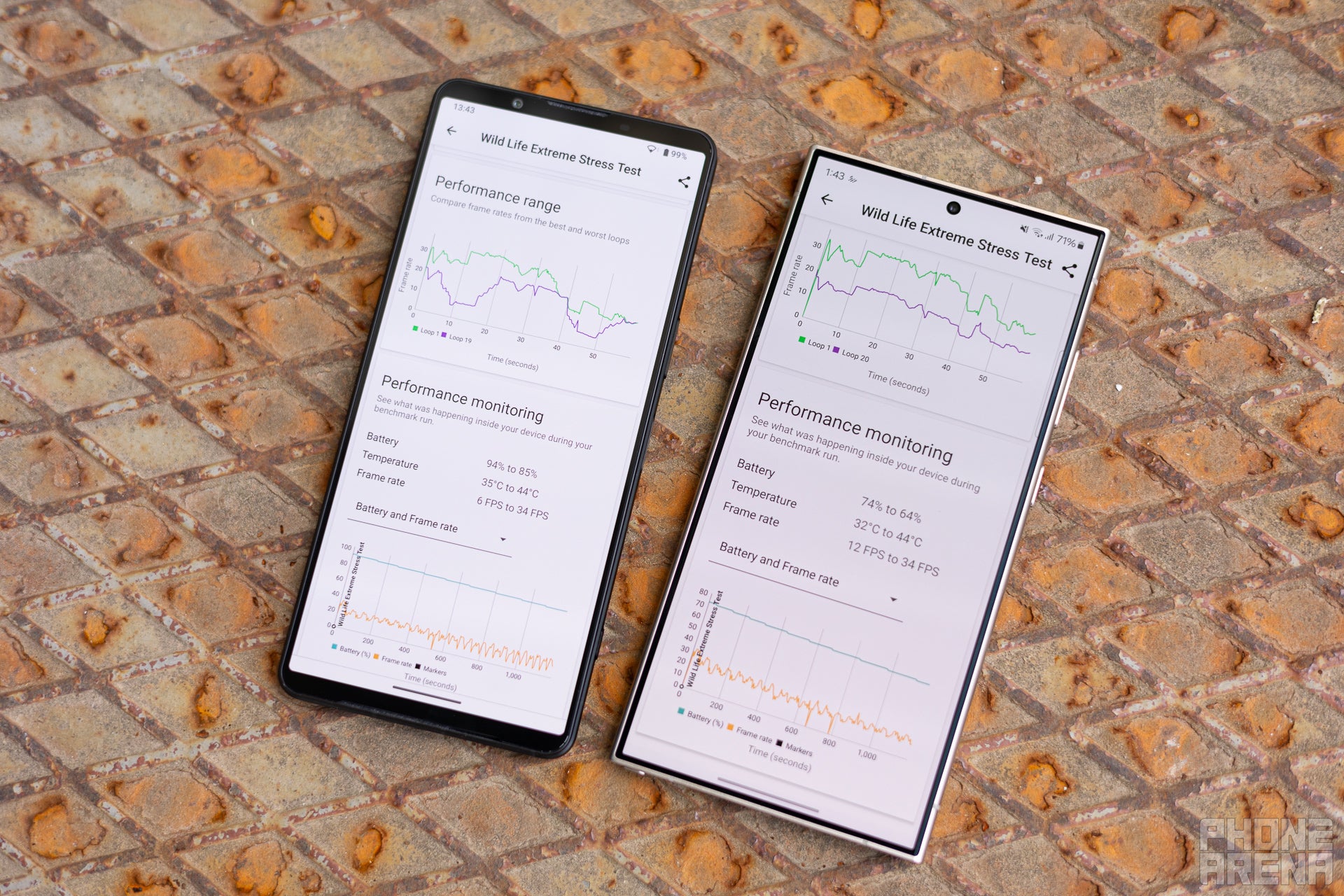
Of course, this is an extreme scenario designed to bake the phone's internals. In real life, both of these phones feel snappy and responsive. One can argue that the Galaxy S24 Ultra offers more headroom for future proofing and gaming.
Speaking of the future — the Galaxy S24 Ultra also comes with a 7-year software update commitment by Samsung. The Xperia 1 VI sticks to the standard 3 years of OS updates and 4 years of security patches. It's also worth noting that Samsung has been getting better at pushing updates out in a rather fast manner (by Android standards), whereas Sony is still kind of on a "surprise, it's here!" schedule.
Sony has been doing the “true optical zoom” thing for a couple of Xperia generations now. There’s an actual physical element inside the phone’s telephoto lens, which ensures stepless optical zoom. In the Xperia 1 VI, that’s between 3.5x and 7.1x (85 mm - 170 mm equivalent).
This is incredible tech for sure, but the results from past models have left us wanting better quality.
Samsung, on the other hand, has two zoom lenses on the Galaxy S24 Ultra — 3x for portraits, 5x as a stepping stone for deeper magnification. And its software work is impeccable — even though Samsung downgraded from a 10x to the 5x lens, its new algorithms picked up the slack and we are generally quite impressed with the Space Zoom here.
OK, magnification aside, Samsung has a 200 MP main camera and gives you the ability to take 200 MP RAW shots with it in manual mode. Sony also bets heavily on pro features in its Camera app and has a 48 MP sensor for its main camera. We’ll see how it compares!
Camera
True zoom is cool, but will that be enough?
Sony has been doing the “true optical zoom” thing for a couple of Xperia generations now. There’s an actual physical element inside the phone’s telephoto lens, which ensures stepless optical zoom. In the Xperia 1 VI, that’s between 3.5x and 7.1x (85 mm - 170 mm equivalent).
Samsung, on the other hand, has two zoom lenses on the Galaxy S24 Ultra — 3x for portraits, 5x as a stepping stone for deeper magnification. And its software work is impeccable — even though Samsung downgraded from a 10x to the 5x lens, its new algorithms picked up the slack and we are generally quite impressed with the Space Zoom here.
OK, magnification aside, Samsung has a 200 MP main camera and gives you the ability to take 200 MP RAW shots with it in manual mode. Sony also bets heavily on pro features in its Camera app and has a 48 MP sensor for its main camera. We’ll see how it compares!
Main Camera
In terms of details, both phones are quite similar. We did a lot of pixel-peeping and could see minimal differences in how each one chooses to sharpen fine details, but it's barely worth noting. For colors — the Xperia 1 VI tends to pull towards magenta-ish casts and dials the saturation the reds a bit high. The Galaxy S24 Ultra pulls towards the greens more — in typical Samsung manner, trees and grass may look a bit neon-ish.
But where they truly differ is in the dynamics. The Galaxy S24 Ultra's dynamic range is excellent, with a lot of detail in both shadows and highlights, giving photos that extra dimension. The Xperia 1 VI kind of disappointed us with a narrower dynamic range and flatter look — a lot of those photos look like the highlights are on the verge of burning.
Aside from the issues with dynamics, which we can also spot when using the zoom camera, the Xperia 1 VI also seems to overcompensate here a little bit by adding just a pinch too much sharpening. Though, we prefer the colors of the Xperia here, especially around the greenery.
Ultra-wide Camera
The Xperia 1 VI's ultra-wide camera doesn't seem to always offer the same calibration as the main snapper, so jumping from one to the other can give you a visible effect. That aside, it also struggles with high dynamics — sometimes we get a darker image, as the phone is trying to preserve the highlights. The Galaxy S24 Ultra's ultra-wide camera gives us performance that feels identical to the main camera.
Selfies
Both phones have 12 MP front cameras, but the Galaxy S24 Ultra is better at preserving details, dynamics, and very certainly skintones. The Xperia 1 VI selfies look a bit washed-out and our subjects look a bit yellowish and sickly.
Video Quality

The Xperia 1 VI records nicely sharp video and its stabilization holds it together quite well when you are walking around. However, you can see the S24 Ultra is a bit better at exposing dark areas. When zooming in, the Xperia footage looks shightly more washed out.
Audio Quality and Haptics
Samsung’s stereo speakers sound pretty good. The bass on the Galaxy S24 Ultra is defined, there’s a good amount of mids, and highs are generally not ice-picky. However, since it uses a setup of an earpiece loudspeaker and a bottom-firing driver, the sound does feel unbalanced from both sides.
It’s worth noting that the Xperia 1 VI still has a 3.5 mm headphone jack. If you love your in-ear monitors, you will definitely appreciate that you don’t need to bring a USB C dongle everywhere.
For haptics — we’ve nothing notable to say. These phones click pretty accurately and consistently nowadays.
Battery Life and Charging
With the downgrade of the screen resolution, and the fact that the 120 Hz screen is dynamic and can drop to 1 Hz, Sony promises a 2-day battery life out of the Xperia 1 VI. That’ll be on a 5,000 mAh battery — the same size as on the Galaxy S24 Ultra.
Samsung’s flagship also has a dynamic refresh rate and a ton of optimizations to save battery. It is quite dependable and will get you through a day for sure, but even with that, One UI itself is quite feature-rich, thus tasks are running and drawing power, and we can’t really call it a “2-day phone”.
PhoneArena Battery Test Results:
They last about the same — nothing surprising for phones that have similar processors and the same battery capacity.
For charging, these phones don’t go nuts with some extreme powerbricks. The Xperia supports 30W wired charging, the Galaxy S24 Ultra maxes out with a 45 W charger.
The charging power shows most difference when you are trying to get some juice in a hurry — smartphones typically charge faster when the battery is empty, and slow down when it fills up, both for safety reasons but also due to how battery cells work. In any case, if you only have 15 minutes to charge, the Galaxy S24 Ultra will juice up to 40%, which is awesome. The same time period will give you 27% — you can still depend on the phone if you enable battery saver and use it sparingly.
But for a full 0%-100% charge, the difference between the two is about 12 minutes, due to the aforementioned charging slow-down.
Specs Comparison
Here’s a quick look at how the core specs compare, but if you want a full sheet be sure to check the Sony Xperia 1 VI vs Samsung Galaxy S24 Ultra specs here.
| Xperia 1 VI | Galaxy S24 Ultra | |
|---|---|---|
| Size, weight | 6.38 x 2.91 x 0.32 in (162 x 74 x 8.2 mm) 6.77 oz (192 g) | 6.39 x 3.11 x 0.34 inches (162.3 x 79 x 8.6 mm) 8.22 oz (233.0 g) |
| Screen | 6.5" OLED 1-120Hz LTPO 1080 x 2340, 396 PPI | 6.8" AMOLED 1-120 Hz LTPO 1440 x 3088, 501 PPI |
| Processor | Qualcomm Snapdragon 8 Gen 3, 3.3 GHz | Qualcomm Snapdragon 8 Gen 3, 3.39 GHz Made for Galaxy |
| RAM, Storage | 12 GB 256 GB / 512 GB | 12 GB 256 GB / 512 GB / 1 TB |
| Cameras | 48 MP main, F1.9 12 MP ultra-wide, F2.2 12 MP 3.5x-7.1x, F2.3-F3.5 12 MP front | 200 MP main, F1.7 12 MP ultra-wide, F2.2 10 MP 3x zoom, F2.4 50 MP 5x zoom, F3.4 12 MP front |
| Battery | 5,000 mAh | 5,000 mAh |
| Charging | 30 W wired 15 W wireless | 45 W wired 15 W wireless |
Summary
So, which is the better phone? For Sony fans, the line in the sand is clear — Xperia all the way. Does the specs change feel like a betrayal? We’d say it shouldn’t, as a 4K screen was quite overkill on a 6.5-inch size.
When we are talking value, Samsung really knocked it out of the park this year with a 7-year software update promise. It’s just extra reassuring to know that your super-expensive device will be getting support for a long, long time (also increases resale value).
Now for the bad news — if you are in the States, know that Sony won't be officially selling the Xperia 1 VI in the USA. Yes, you can try and get a model from a 3rd party reseller — be warned that these will only work on GSM networks, like T-Mobile, and do double-check to see that the model you are looking at supports the proper bands.
We'd say it's not worth the hassle — with a price of £1,299.00 in the UK, it'd be an expensive experiment to get an Xperia 1 VI with questionable warranty in the USA. The Galaxy S24 Ultra’s MSRP may be high, but looks like a bargain in comparison.
We'd say it's not worth the hassle — with a price of £1,299.00 in the UK, it'd be an expensive experiment to get an Xperia 1 VI with questionable warranty in the USA. The Galaxy S24 Ultra’s MSRP may be high, but looks like a bargain in comparison.
For the rest of the world — we can say the same. 7 years of software updates, a better point-and-shoot camera experience, and a lower price... We think the Galaxy S24 Ultra is just the better investment.
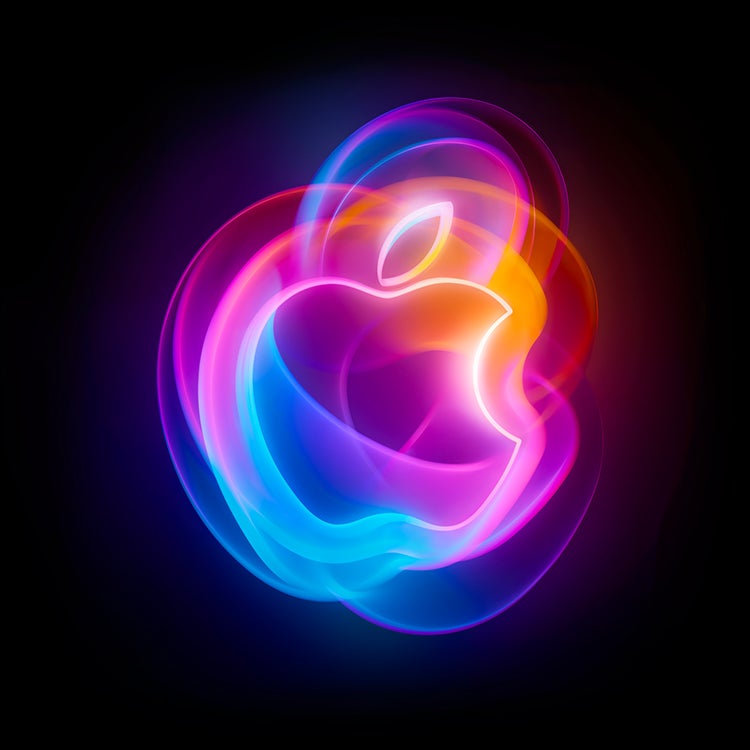
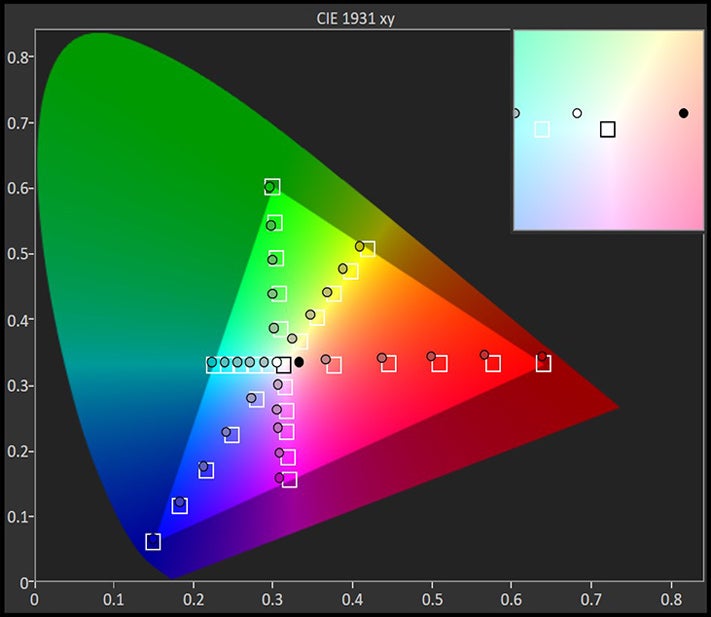






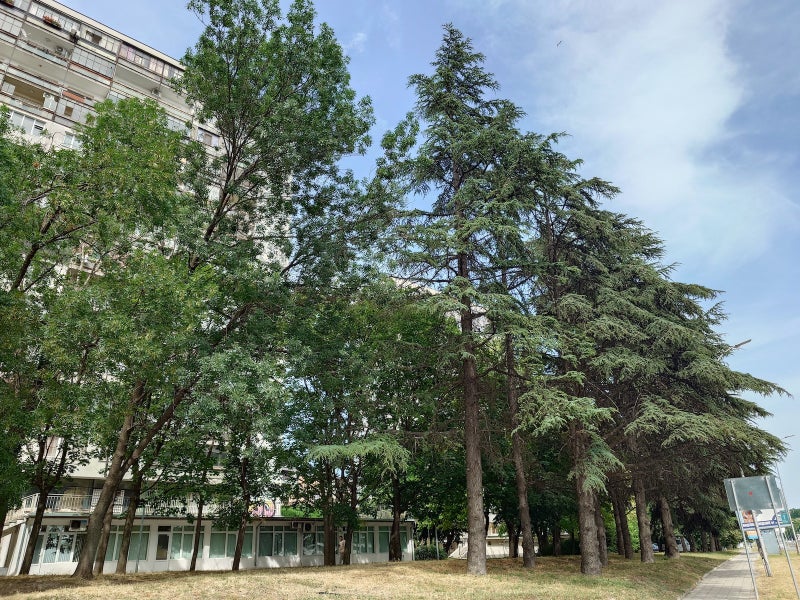


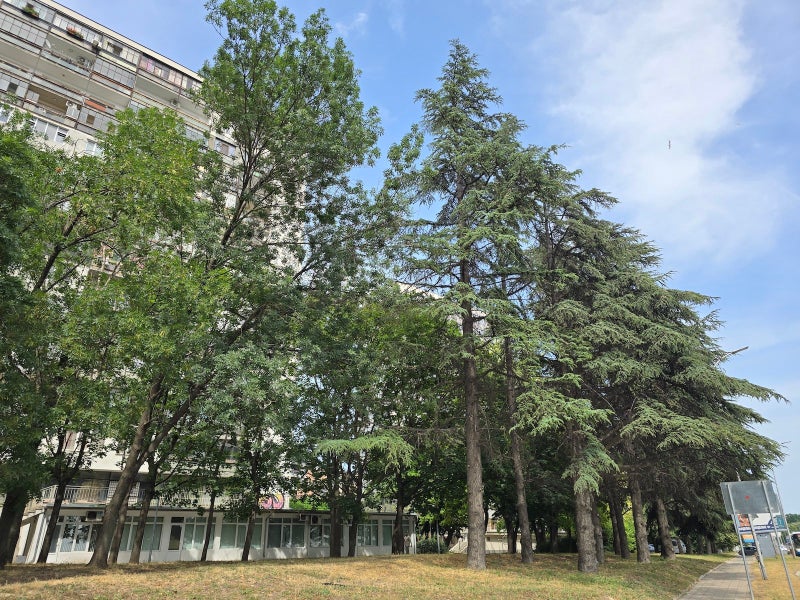









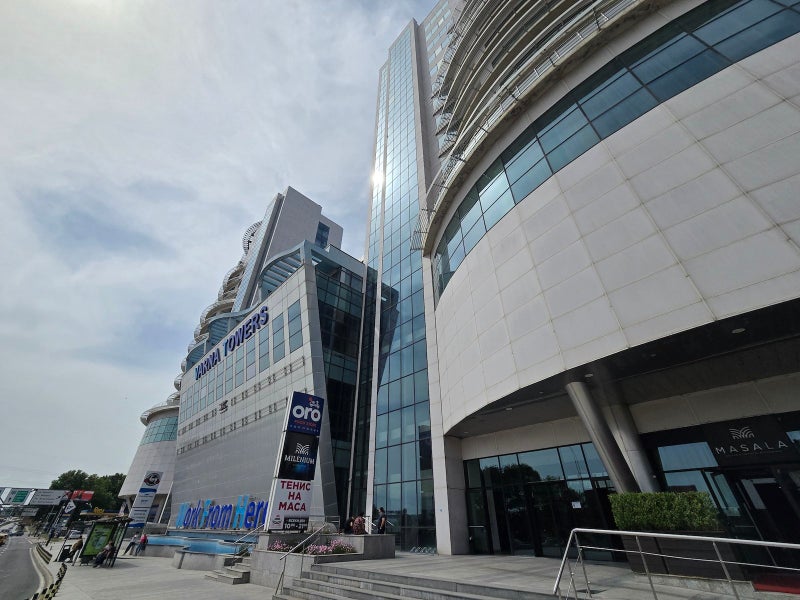






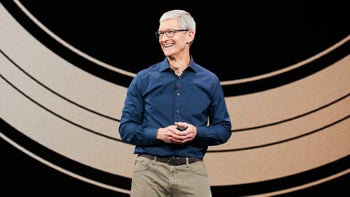
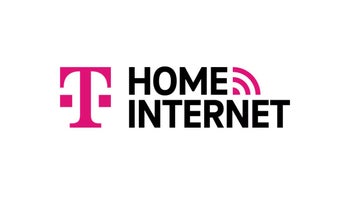
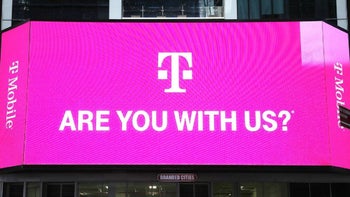


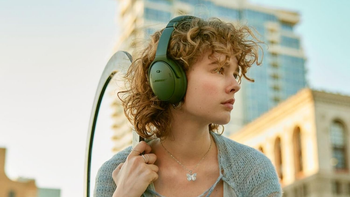

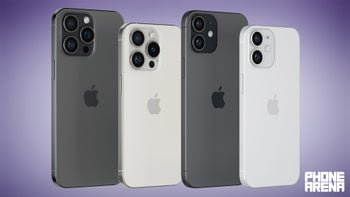
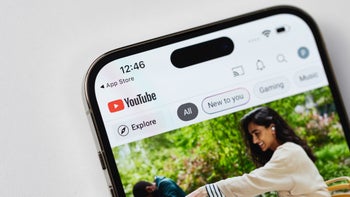
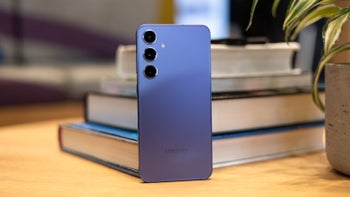


Things that are NOT allowed: